Sharing is caring!
Awesome Catholic Easter Science Activity:
Free Flower Dissection Lab
I got this idea for a lily flower study on St. Joseph’s Feast Day since one of his symbols is the lily. St. Joseph is often seen holding lilies in photos and statues. This study can be done at any time, but it makes for an awesome Catholic Easter science activity. It is also very easy to find lilies and any other flowers you may wish to study during this time.
This post will walk you through all of the supplies you will need, and show you how to complete the experiment step by step.
This activity is also perfect to complete as a family! Ages 2 and up can participate. Your toddlers will love getting a closer look at the flower, and your older children can keep formal notes on each part as they label them.
An ebook of this activity is coming soon! It has everything laid out for you, including worksheets to help you teach your children about the parts of the lily. The worksheets will work well for 1st grade and up, but, again, your littlest scientist will also benefit from joining in the study!
I hope you enjoy studying God’s beautiful world with your children! God is so good to give us a glimpse into His fascinating world of science!
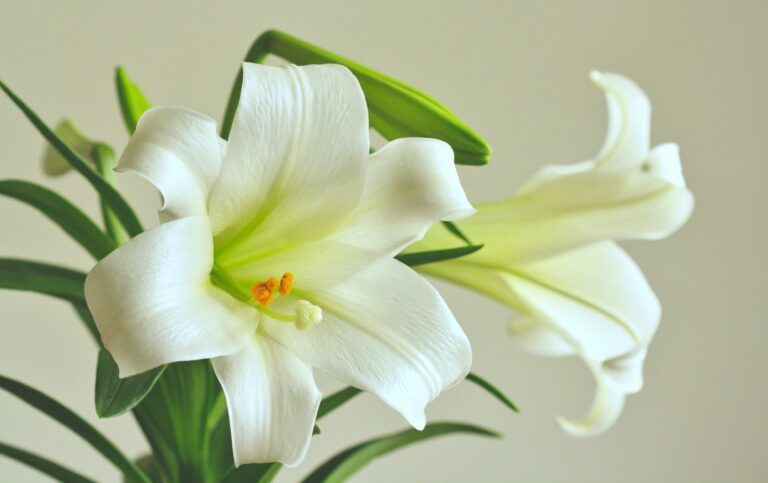
What is the easiest flower to dissect?
Any flower that has all of the main parts easily accessible and visible is a great flower to dissect.
The lily is one of the easiest (if not the easiest) flower to dissect!
All of the main parts that we will be discussing are large and easy to find and take apart from the flower. In addition, the various parts can be taped in a notebook to preserve and refer to again and again.
What do white lilies symbolize?
White lilies symbolize purity, peace, rebirth, innocence, hope, and new beginnings.
It is easy to see why lilies are so abundant during the Easter season!
Just like Christ in the tomb, the lily stays in the bulb until the temperature and conditions around it are just right.
The plain, unassuming bulb will eventually burst and bloom into one of the most beautiful flowers!
St. Joseph and the lily
St. Joseph is often seen holding lilies in paintings or statues. According to legend, St. Joseph was chosen among other men when lilies were observed blossoming from his staff.
The following passage from scripture is often also used in reference to St. Joseph:
“The just man shall blossom like the lily” (Hosea 14:5)

What materials are need for flower dissection and this Catholic Easter science activity?
You will need the following supplies to complete this study:
- A lily for yourself and for each child
- Scissors
- Regular tape
- Packing tape
- Journal or paper (to preserve your lily parts
- Writing utensils
- Plain, white paper
- White glue
- A green pipe cleaner for each person and 1/6 of a yellow pipe cleaner per person
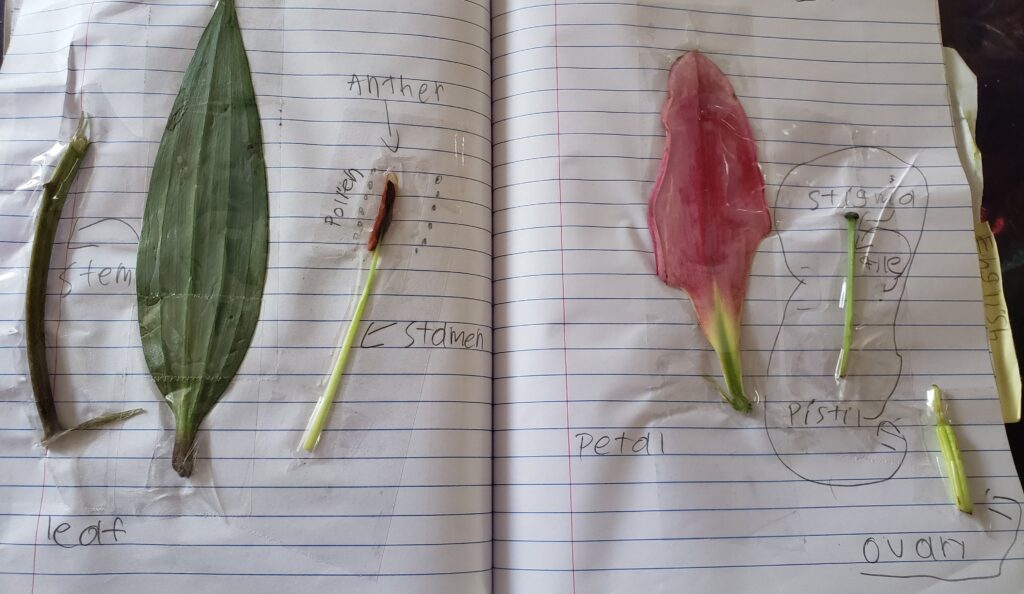
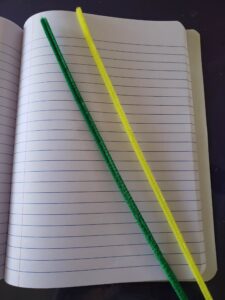
What is the objective of a flower dissection?
The objective of a flower dissection is to learn and identify the parts of the flower.
Secondly, we can learn the function or purpose of each part.
Lastly, a flower dissection is a hands on and engaging learning experience for kids of all ages! Once children become proficient at labeling one type of flower, they can apply their knowledge to identifying the parts of other types of flowers.
The video below describes the different parts of the lily in a very clear way.
What is the structure of a lily plant?
A lily is composed of the following main parts: leaves, sepals, petals, stamen, pistil, stem.
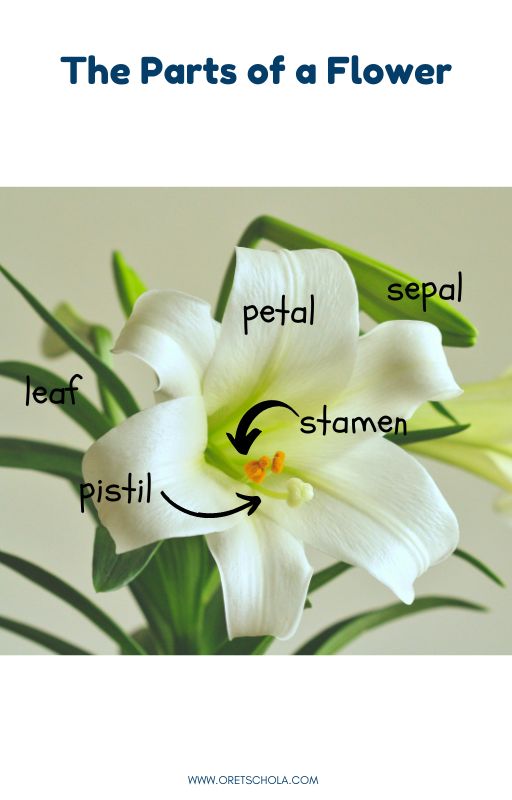
Leaves
The leaf provides food for the plant via photosynthesis and takes in air through pores called stomata.
Sepals
The sepals look very similar to petals, but are the outermost parts of a bud that protect the flower when it is in bud form. Sometimes, the sepals are a totally different color than the petals (such as green).
Petals
The petals are actually modified leaves that are brightly colored to attract pollinators such as bees, butterflies, hummingbirds.
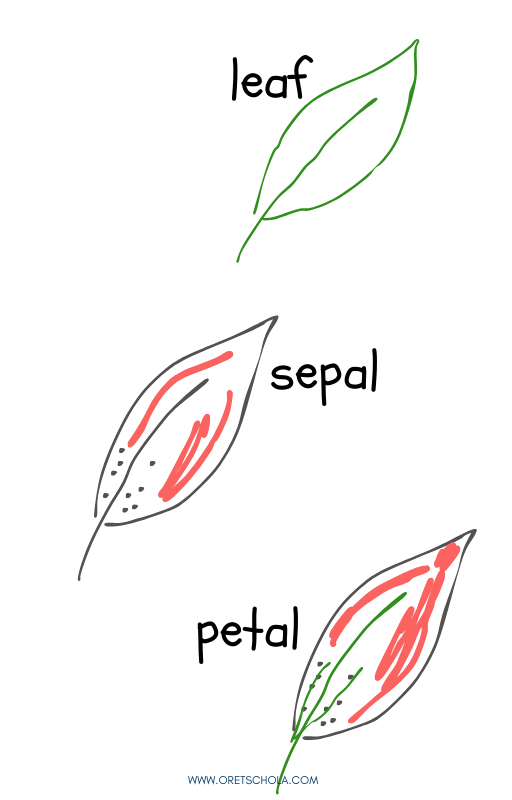
Stamen
The stamen is the the male part of the plant. The long stemlike part is the filament and it holds up the anther. The anther holds the pollen that is picked up by the pollinators. The pollinators carry the pollen from plant to plant, and this is how the ovules get fertilized.
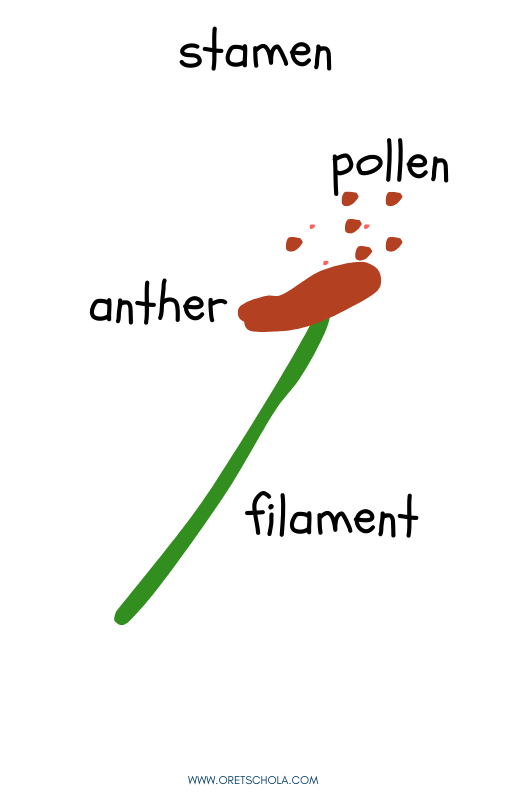
Pistil
The pistil is the female reproduction part of the plant, and it made up of the stigma, style, and ovary. The stigma is usually hairy or sticky to allow pollen to stick to it. This is where the pollen germinates. The style is the long tube attached below the stigma and is like a highway for the pollen to travel down to the ovary. The ovary is at the bottom of the style and connects the pistil to the stem. The ovary holds ovules that will be fertilized and turned into seeds.
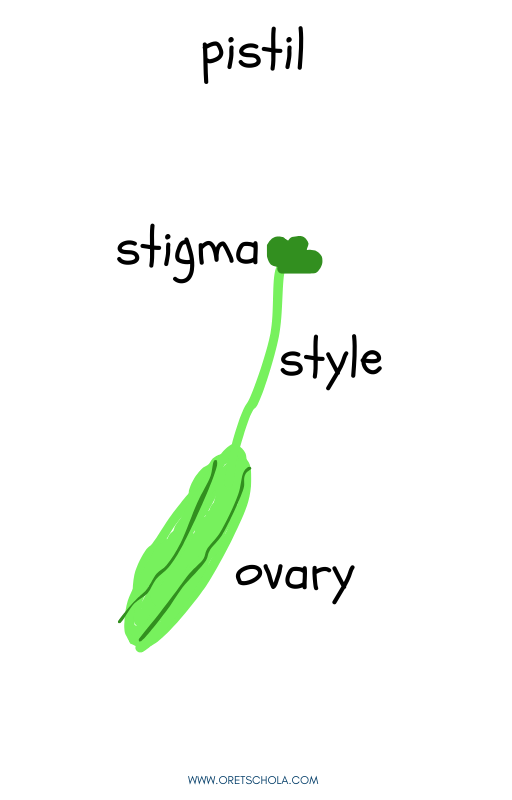
Stem
The stem holds up and supports the plant and allows water and nutrients to be carried from the soil up to the plant.
What are the steps to dissect a flower in this Catholic Easter science activity?
For a flower dissection, you are carefully taking the flower apart piece by piece to learn about each structure and its function.
The steps for a flower dissection are as follows:
- Obtain a flower for each person participating in the activity
- Identify the leaves and cut some off to observe. You may wish you tape one into a marble science notebook if you use one for nature study or science study.
- Identify and obtain the sepals. Add one to your science notebook.
- Identify and obtain the stamen. Find the anther (which holds the pollen) and the filament (which holds up the anther). Again, secure them in your notebook if desired.
- Identify and obtain the pistil. Find the stigmas at the top (which is usually hairy or sticky), the style, and the ovary. Tape the pistil into your notebook.
- Identify and obtain the stem. Tape part of it into your notebook.
Be sure to label and discuss all of the parts. Most importantly, have fun and take your time so the children have plenty of opportunities for questions, discussion, and exploration.
Flower Dissection Lab PDF: A guide to this Catholic Easter science activity
An ebook for this activity is coming soon! The activity is laid out step by step, as well as all of the flower parts and their functions.
Also, there are worksheets for students to work on defining and labeling each part of the flower.
Visit www.restinthee.com to sign up to be notified when the study is available!
Pin it for later
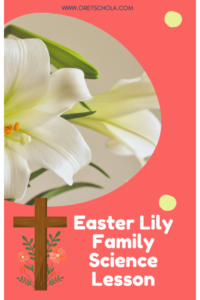
Sharing is caring!

Thank you!!
What kind of lily did you use?
Is the ebook available!
I’m
Teaching this lesson on Tuesday. God bless!
Hi Ginny!
So happy you found the lesson helpful! Did you end up using it? Please let me know how it went! I am sorry the e-book wasn’t ready, but it should be up soon on our sister site http://www.restinthee.com as well as lots of free resources and lesson plans! Have a wonderful day and God bless!
-Alex